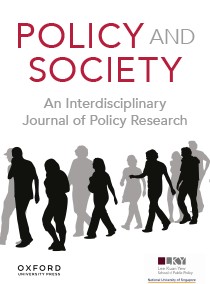生物多样性的政策设计:问题概念的偏离如何破坏 "适合目的 "的泥炭地保护
IF 6.1
1区 社会学
Q1 POLITICAL SCIENCE
引用次数: 0
摘要
二十多年来,科学家们记录了全球泥炭地生态系统令人震惊的衰退,它们被视为地球上最重要的碳汇。这些独特湿地的恶化以及政策对它们的关注,给政策科学家和研究预期政策设计的学生带来了难题。出现了两种截然不同的解释。一些人认为,经济全球化的压力迫使政府放宽了环境标准,而另一些人则指出了政策设计和实施中的缺陷。我们的论文运用卡肖尔的 "四种问题类型 "框架来评估一种更细微的解释:全球和地方政策未能遏制生态系统退化的原因在于目前对问题的理解与有效环境管理所需的理解之间存在偏差。我们发现大量证据表明,要扭转泥炭地退化的趋势,就必须从根本上转变应用政策分析方法--从将危机视为第 3 类(妥协)、第 2 类(优化)甚至第 1 类(公地)问题,转变为将其视为第 4 类(优先化)挑战。要做到这一点,需要完成四项基本的政策设计任务:参与顺序/逻辑排序过程;确定问题的关键特征,任何解决方案都需要纳入这些特征才能有效克服;应用路径依赖分析,发现能够 "锁定 "可持续发展轨迹的政策组合创新,从而抵御政策概念漂移的压力;组织多方利益相关者的 "政策设计学习 "活动,整合生态科学和政策科学内部及之间产生的复杂知识来源。本文章由计算机程序翻译,如有差异,请以英文原文为准。
Policy design for biodiversity: How problem conception drift undermines “fit-for-purpose” Peatland conservation
For over two decades, scientists have documented the alarming decline of global Peatland ecosystems, regarded as the planet’s most crucial carbon sinks. The deterioration of these unique wetlands alongside their policy attention presents a puzzle for policy scientists and for students of anticipatory policy design. Two contrasting explanations have emerged. Some argue that pressures from economic globalization compel governments to relax environmental standards, while others point to deficiencies in policy design and implementation. Our paper applies Cashore’s Four Problem Types framework to assess a more nuanced explanation: that failure of global and local policies to curb ecosystem degradation is owing to a misalignment between how the problem is currently conceived of, and what conception is required for, effective environmental management. We find overwhelming evidence that reversing Peatland degradation necessitates a fundamental shift in applied policy analysis—from treating the crisis as a Type 3 (Compromise), Type 2 (Optimization), or even Type 1 (Commons) problem, to conceiving it as a Type 4 (Prioritization) challenge. Achieving this requires undertaking four essential policy design tasks: engaging sequentialist/lexical ordering processes; identifying key features of the problem that any solution would need to incorporate to effectively overcome; applying path dependency analysis to uncover policy mix innovations capable of “locking-in” sustainability trajectories that can fend off pressures for policy conception drift; and organizing multistakeholder “policy design learning” exercises that integrate complex sources of knowledge produced within, and across, the ecological and policy sciences.
求助全文
通过发布文献求助,成功后即可免费获取论文全文。
去求助
来源期刊

Policy and Society
Multiple-
CiteScore
18.00
自引率
6.50%
发文量
43
审稿时长
30 weeks
期刊介绍:
Policy and Society is a prominent international open-access journal publishing peer-reviewed research on critical issues in policy theory and practice across local, national, and international levels. The journal seeks to comprehend the origin, functioning, and implications of policies within broader political, social, and economic contexts. It publishes themed issues regularly and, starting in 2023, will also feature non-themed individual submissions.
 求助内容:
求助内容: 应助结果提醒方式:
应助结果提醒方式:


